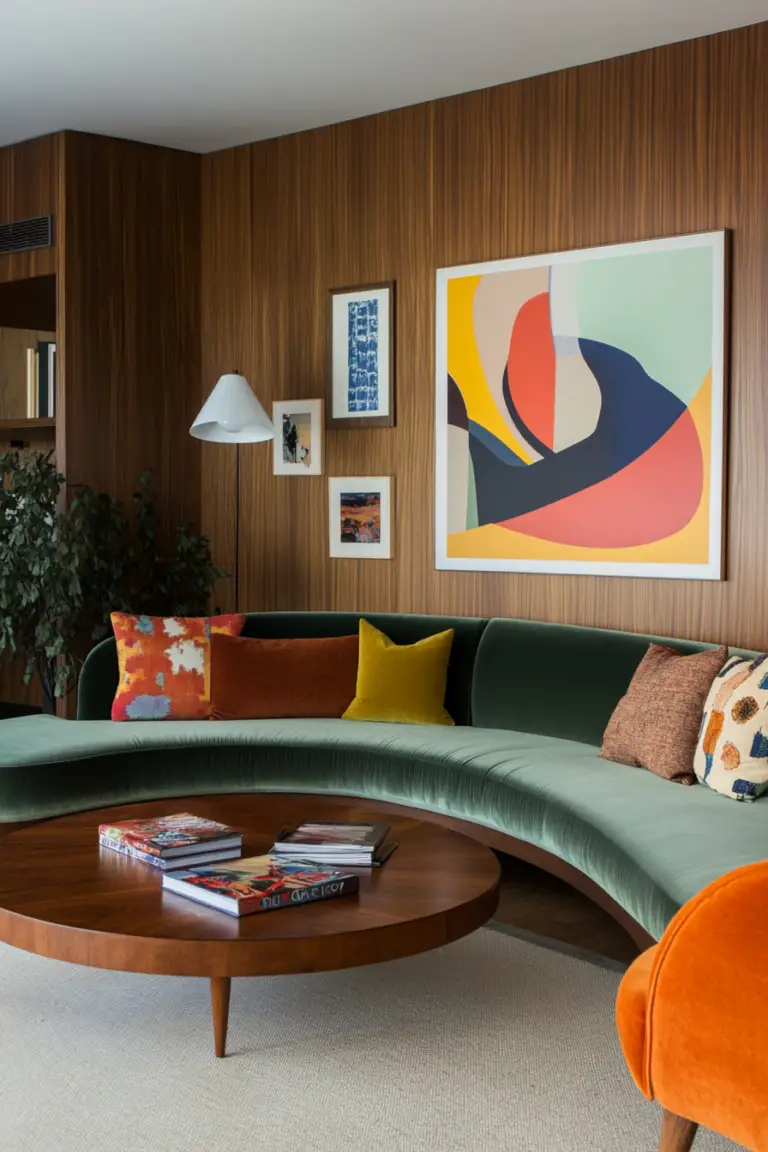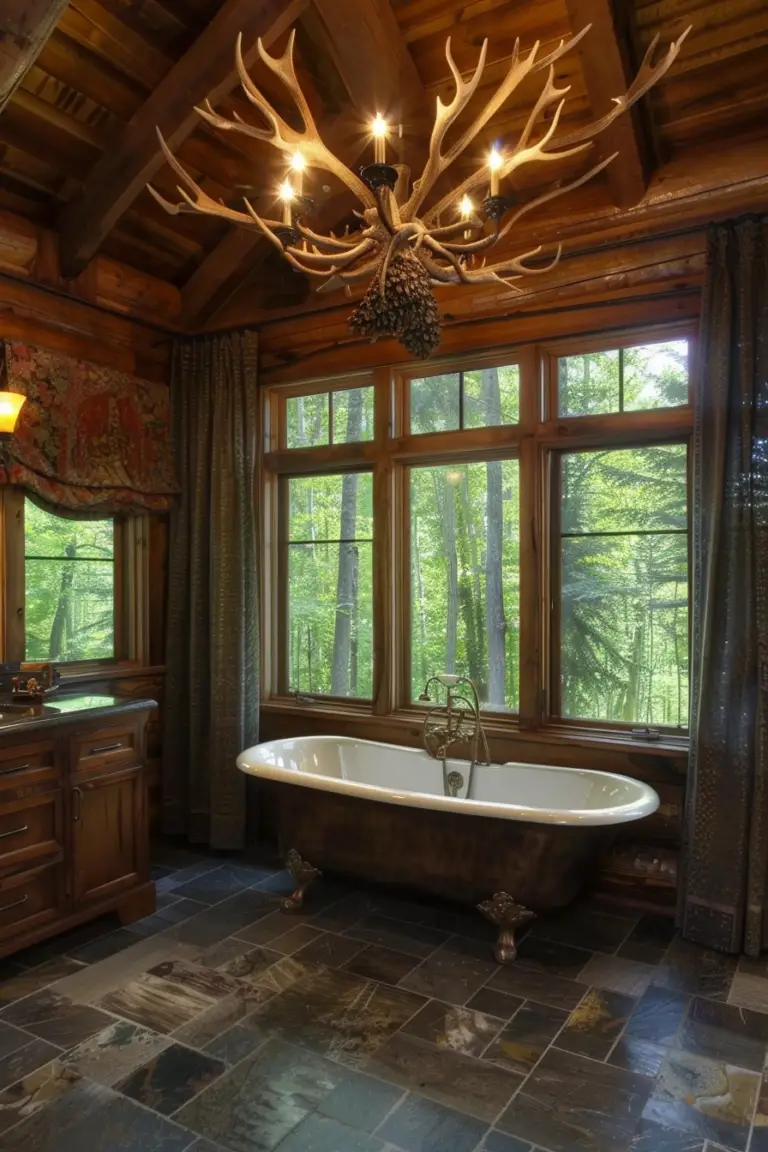The Best Plant Picks for a Sun-Soaked Front Yard
Think a sun-drenched front yard limits your plant choices? With the right selection, you can turn that bright space into a vibrant, welcoming oasis that makes the neighbors stop and stare (in a good way). Let’s get into how you can make the most of all that sunshine.
Plant Picks for Sunny Spots
First things first, you need plants that love the sun as much as you do.
- Succulents and Cacti: These guys thrive in sunlight and are low-maintenance (hello, easy care!). Think aloe vera, agave, or colorful echeverias.
- Lavender: Not only does it offer a lovely fragrance, but its purple blooms add a pop of color.
- Daylilies: These resilient flowers come in various hues and can handle the heat like champs.
- Rosemary: It doubles as a culinary herb and a decorative shrub—talk about multitasking!
Splash Some Color Around
A sunny yard is the perfect canvas for a riot of colors.
- Sunflowers: Tall and cheerful, they’re like a daily dose of sunshine.
- Zinnias and Marigolds: These annuals are budget-friendly and bloom all season long.
- Bougainvillea: For a touch of the tropics, their vibrant bracts are hard to beat.
Budget-Friendly Beauties
You don’t need to empty your wallet to spruce up your yard.
- Seed Swaps: Join local gardening groups (often free!) to exchange seeds and cuttings.
- Perennials Over Annuals: Invest in plants that come back every year, saving you money in the long run.
- DIY Planters: Get crafty with old containers or pallets to create unique planters.
Personalize Your Space
Make your front yard a reflection of your personality.
- Garden Art: Add homemade sculptures or painted rocks (fun for the kids, too!).
- Pathways: Use stepping stones or gravel to create inviting walkways.
- Themed Sections: Love butterflies? Plant milkweed and butterfly bush to attract them.
Things to Always Keep in Mind
- Mulch Matters: It keeps soil cool and retains moisture (less watering for you!).
- Smart Spacing: Give plants room to grow to avoid overcrowding.
- Regular Maintenance: A little weeding and pruning go a long way.
- Water Wisely: Early morning watering reduces evaporation.
1. Aromatic Bliss: Lavender and Catmint

English Lavender (Lavandula angustifolia) and Catmint (Nepeta spp.) make a perfect pair for adding both visual appeal and a delightful fragrance to your front yard. Plant these two alongside your walkway or driveway to create a welcoming and sensory experience. Lavender’s silvery foliage and tall, purple spikes contrast beautifully with the soft, billowing forms of Catmint, creating a soothing and aromatic entryway.
Both plants thrive in well-drained, sunny spots and require minimal maintenance, making them ideal for low-water landscapes. Lavender’s vertical structure provides height and interest, while Catmint spreads gracefully, filling in gaps and suppressing weeds. Consider planting them in masses for a bold effect, or intersperse them with other perennials for a more mixed, cottage garden look.
To enhance the Mediterranean feel, add some gravel mulch around the base of the plants, which will also help retain moisture. This combination not only looks stunning but also attracts pollinators, bringing your garden to life with bees and butterflies throughout the blooming season.

2. Burst of Color: Roses and Purple Coneflower
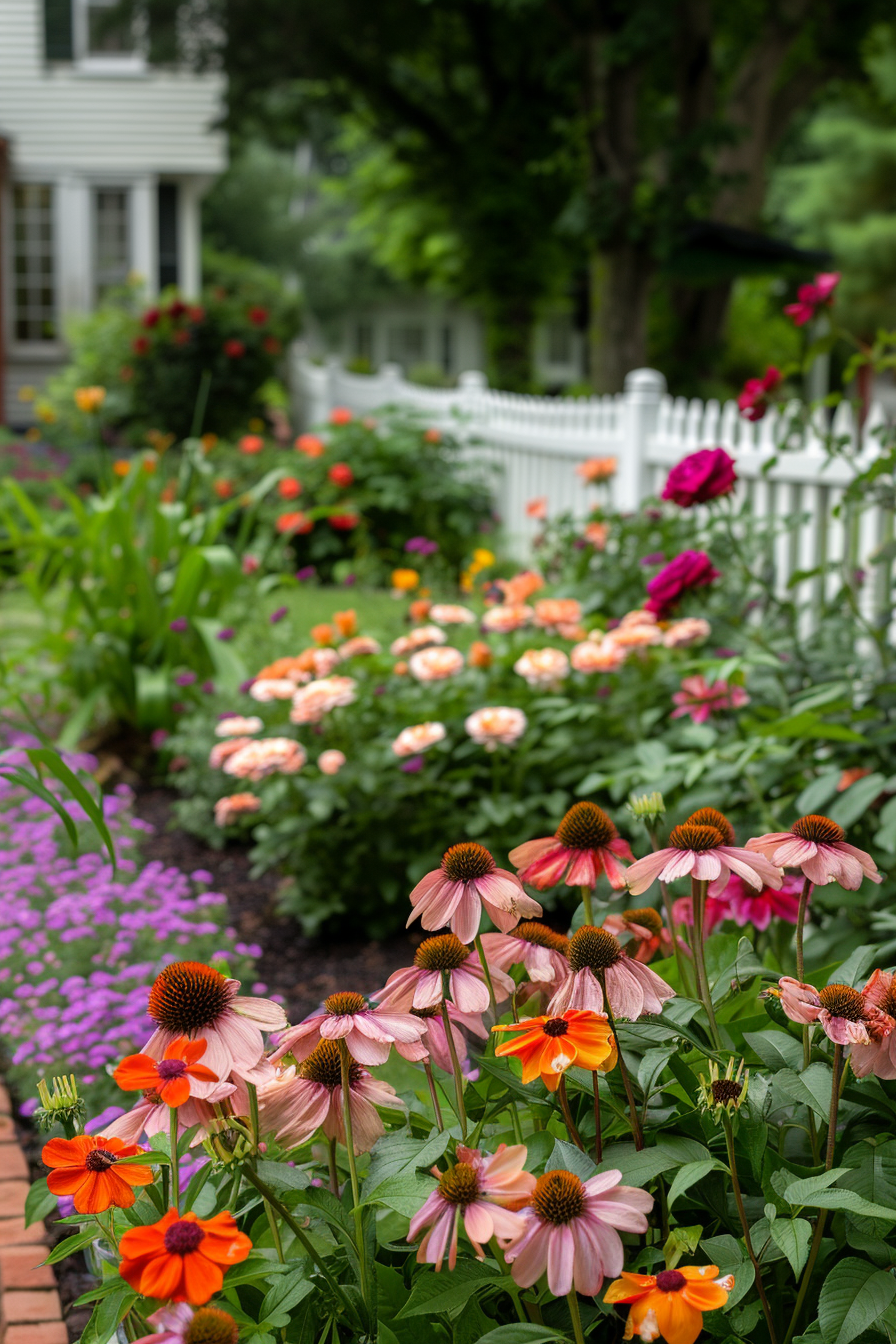
Roses (Rosa spp.) and Purple Coneflower (Echinacea purpurea) provide a classic combination of elegance and rustic charm. Plant roses as focal points in your garden beds or near your entrance, where their full blooms and delightful fragrance can be fully appreciated. Pair them with Purple Coneflower, whose vibrant, daisy-like flowers and sturdy stems add a touch of wild beauty and support to the garden’s structure.
Choose varieties of roses that suit your color preference and growth habit, whether climbing, bush, or groundcover. Combine these with groups of Purple Coneflower, which not only add splashes of pink and purple but also attract pollinators. This mix ensures a continuous show of blooms from late spring through fall.
To create a more dramatic effect, use dark mulch to make the colors of the flowers pop and consider adding a backdrop of green foliage plants to enhance the visual impact. This combination is perfect for sunny borders and will provide year-round interest, with the coneflowers’ seed heads adding winter texture.

3. Sunshine Radiance: Sunflowers and Blanket Flower

For a front yard that radiates with sunny cheer, consider planting Sunflowers (Helianthus annuus) and Blanket Flower (Gaillardia x grandiflora). Sunflowers, with their towering stems and bright yellow faces, provide a striking vertical element that can serve as a dramatic backdrop or a focal point in any garden. Pair them with Blanket Flower, whose red and yellow blooms offer a continuous carpet of color at their feet.
These plants are perfect for creating a playful, informal garden style. Sunflowers thrive in sunny, well-drained spots and can be used to screen areas or create natural, living fences. Blanket Flower, with its long blooming season and drought tolerance, is ideal for edging or filling in sunny garden beds.
For best results, plant sunflowers at the back of the garden bed or along fences, and intersperse Blanket Flowers in front. This combination not only provides a vivid palette of warm colors but also supports local wildlife, attracting birds and beneficial insects.
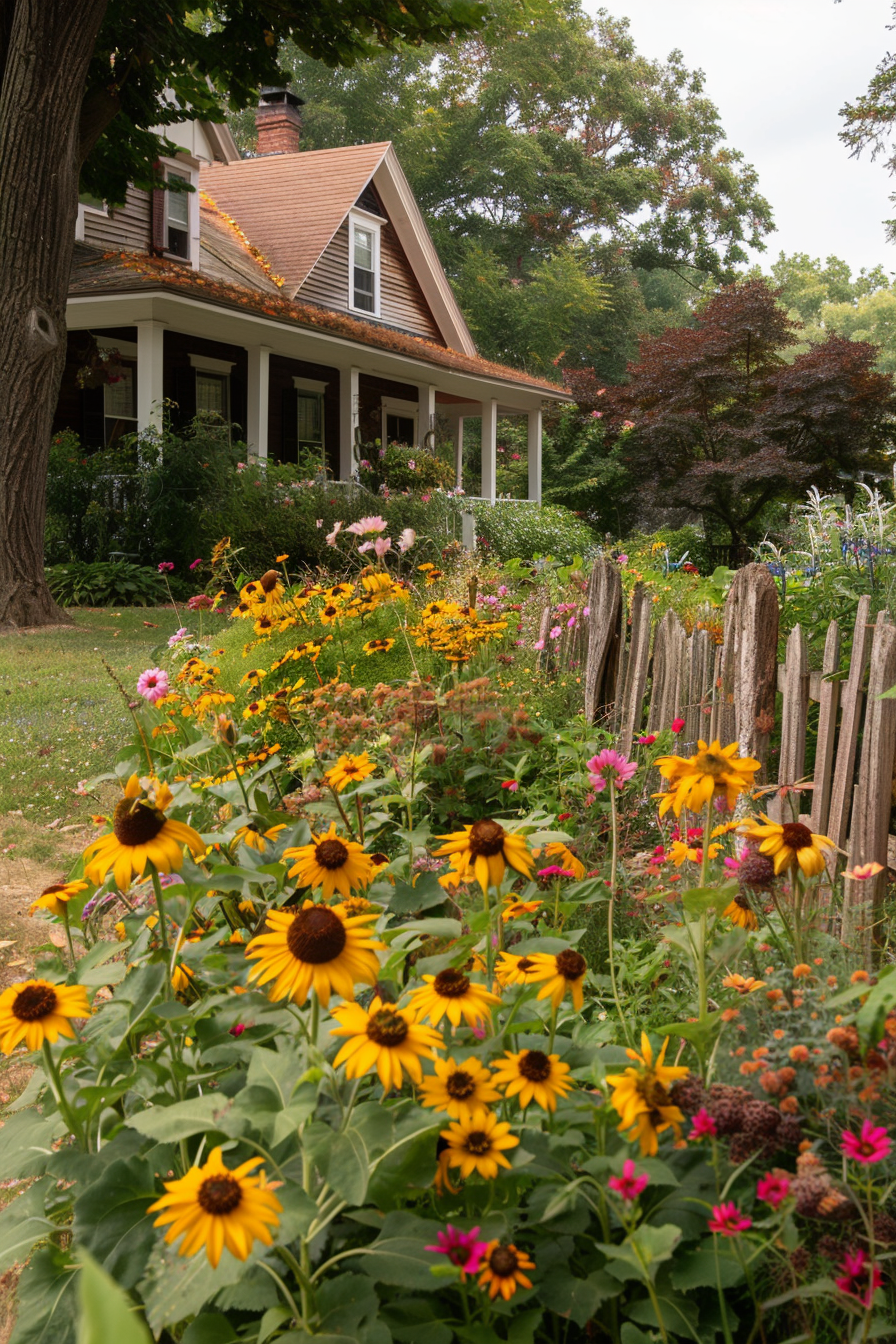
4. Timeless Elegance: Yarrow and Woodland Sage

Yarrow (Achillea millefolium) and Woodland Sage (Salvia nemorosa) offer a timeless combination of color and texture for any front yard. Yarrow’s flat-topped clusters of blooms come in various hues and provide a classic, cottage garden feel. Woodland Sage, with its spikes of blue or purple flowers, adds vertical interest and a touch of formality to the mix.
Yarrow is known for its hardiness and ability to thrive in full sun with minimal water, making it a great choice for sustainable landscapes. Woodland Sage’s upright growth habit complements Yarrow’s more spreading form, creating a balanced and cohesive planting scheme.
To create a harmonious look, plant Yarrow in groups to form a groundcover or mass planting and use Woodland Sage as an accent or to create vertical lines in your design. Both plants are attractive to pollinators and will bring a lively buzz to your garden throughout the growing season.

5. Desert Beauty: Century Plant and Echeveria

For a front yard with a touch of desert charm, combine Century Plant (Agave americana) and Echeveria (Echeveria spp.). The bold, architectural form of the Century Plant, with its large, spiky leaves, provides a striking focal point. Echeveria, with its rosette-shaped succulent leaves, adds a soft, textured layer at the base.
Century Plants are perfect for making a statement in sunny, dry areas of your yard. Their dramatic, sculptural presence can anchor a rock garden or desert-themed landscape. Echeverias are ideal for edging paths, filling containers, or softening the base of larger plants like the Century Plant.
Create a cohesive desert garden look by grouping Century Plants as focal points and filling in around them with clusters of Echeveria. Use gravel or stone mulch to enhance the desert aesthetic and ensure good drainage, essential for these succulents to thrive.

6. Vibrant and Hardy: Black-Eyed Susan and Lantana

Black-Eyed Susan (Rudbeckia hirta) and Lantana (Lantana camara) are perfect for creating a front yard that bursts with vibrant color and thrives in full sun. Black-Eyed Susan’s bright yellow, daisy-like flowers are a garden classic, providing a long-lasting display of cheerful blooms. Lantana, with its multicolored flower clusters, adds a tropical touch and attracts a plethora of butterflies.
Plant Black-Eyed Susans in drifts or large groups for a bold impact. They make excellent border plants or fillers for sunny beds and will keep blooming all summer long. Lantana’s spreading habit and vibrant colors make it perfect for ground cover or as a filler plant in mixed borders.
To create a vibrant and dynamic front yard, mix these plants in sunny areas where they can shine. The combination of Black-Eyed Susan’s golden blooms and Lantana’s rich hues creates a lively and welcoming landscape that requires minimal water and care.

7. Textural Delight: Blue Fescue and Blanket Flower

For a front yard that combines texture and color, pair Blue Fescue (Festuca glauca) and Blanket Flower (Gaillardia x grandiflora). Blue Fescue’s fine, blue-gray foliage provides a cool, textural contrast to the warm, vibrant blooms of Blanket Flower. Together, they create a striking visual effect that is both dynamic and harmonious.
Blue Fescue’s mounded form and subtle color make it an excellent choice for edging or for creating a soft, textured ground cover. Blanket Flower’s bright, daisy-like blooms provide a pop of color that lasts throughout the summer, making it a perfect companion for the cool-toned Fescue.
Plant Blue Fescue in masses or use it to create a border along pathways. Intermingle Blanket Flowers among the Fescue for a meadow-like effect that adds color and movement to your garden. This combination is ideal for sunny, well-drained areas and requires little maintenance once established.

8. Classic Contrast: Roses and Creeping Juniper

For a front yard that exudes timeless elegance, combine Roses (Rosa spp.) and Creeping Juniper (Juniperus horizontalis). Roses, with their lush blooms and varied colors, serve as classic focal points. Creeping Juniper, with its low-growing, spreading habit and evergreen foliage, provides a contrasting backdrop that highlights the beauty of the roses.
Use Roses as statement plants, placing them in prominent spots where their beauty can be fully appreciated. Creeping Juniper’s dense, ground-hugging form makes it ideal for covering bare ground and suppressing weeds, providing a lush, green carpet beneath the roses.
To achieve a sophisticated look, plant roses in groups or as individual specimens in sunny areas. Surround them with Creeping Juniper to create a seamless, green foundation that sets off the roses’ vibrant blooms. This combination is perfect for creating structured, yet romantic garden beds and borders.

9. Wild and Wonderful: Purple Coneflower and Adam’s Needle Yucca

Purple Coneflower (Echinacea purpurea) and Adam’s Needle Yucca (Yucca filamentosa) create a bold and dynamic front yard with their contrasting forms and textures. Purple Coneflower’s tall, graceful stems and large, purple flowers provide a soft, natural look. In contrast, Adam’s Needle Yucca’s sharp, sword-like leaves and dramatic flower spikes add a striking architectural element.
Purple Coneflower is perfect for adding height and color to sunny borders and garden beds. Its long-lasting blooms attract butterflies and other pollinators, bringing movement and life to your garden. Adam’s Needle Yucca, with its evergreen foliage and towering flower stalks, adds a year-round presence and a touch of the exotic.
To create a balanced and visually interesting landscape, plant Purple Coneflowers in clusters or drifts and position Adam’s Needle Yucca as focal points or accents. This combination works well in sunny, well-drained areas and adds both color and structure to your front yard.

10. Coastal Charm: Maiden Grass and Coreopsis

For a front yard with a touch of coastal charm, combine Maiden Grass (Miscanthus sinensis) and Coreopsis (Coreopsis spp.). Maiden Grass’s tall, feathery plumes and graceful, arching foliage provide movement and texture. Coreopsis’s bright, daisy-like flowers add a burst of sunny color that complements the grass’s softer tones.
Maiden Grass is perfect for creating vertical interest and adding a sense of flow to your garden. Its tall, airy plumes sway gently in the breeze, bringing a dynamic quality to your landscape. Coreopsis, with its long blooming period and cheerful flowers, provides a continuous display of color throughout the summer.
Plant Maiden Grass in the background or as a screen to define areas of your garden. Use Coreopsis as a filler in front of the grass or to edge pathways and borders. This combination is ideal for creating a relaxed, coastal-inspired look that thrives in sunny, well-drained spots.

11. Mediterranean Magic: Wormwood and Tall Verbena
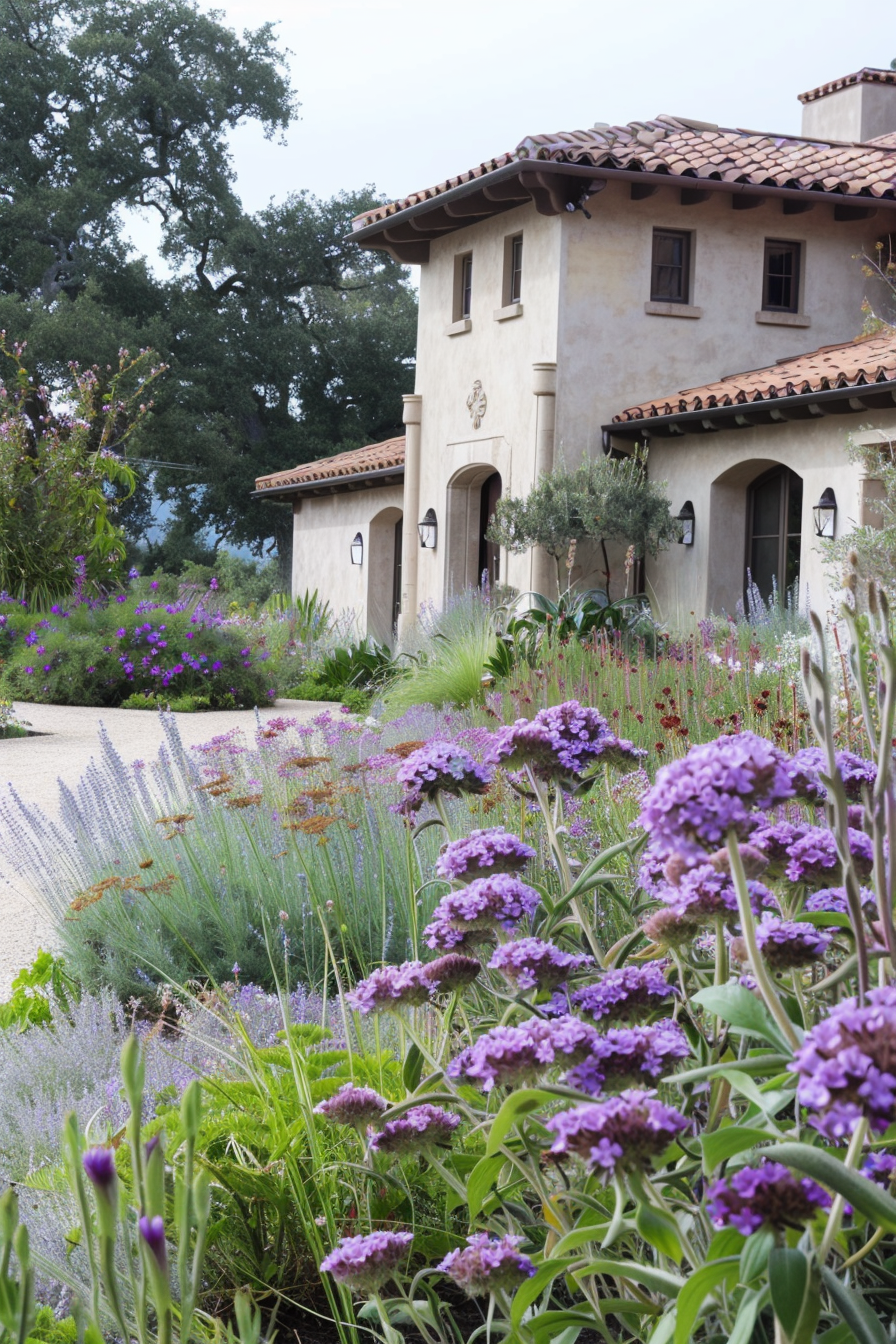
Create a front yard with a touch of Mediterranean flair by combining Wormwood (Artemisia ‘Powis Castle’) and Tall Verbena (Verbena bonariensis). Wormwood’s silvery, finely cut foliage adds a soft, ethereal quality, while Tall Verbena’s airy, purple flower clusters rise above on slender stems, adding a sense of lightness and movement.
Wormwood is ideal for adding a soft, silvery texture to your garden and works well as a low-growing ground cover or border plant. Tall Verbena, with its towering, delicate flowers, provides height and attracts butterflies, adding life and color to your garden.
To achieve a Mediterranean look, plant Wormwood in masses to create a soft, silver backdrop and intersperse Tall Verbena to add vertical interest and a touch of color. This combination thrives in sunny, well-drained areas and is perfect for creating a light, airy, and relaxed garden atmosphere.

12. Bold and Beautiful: Japanese Maple and Autumn Joy Sedum

For a front yard that combines bold color and texture, pair Japanese Maple (Acer palmatum) and Autumn Joy Sedum (Sedum spectabile). Japanese Maple’s elegant, red foliage provides a striking focal point, while Autumn Joy Sedum’s succulent leaves and large, pink flower heads add texture and color.
Japanese Maples are perfect for creating a statement in your garden with their graceful form and vibrant leaves. Autumn Joy Sedum’s upright growth and large, flat-topped flower clusters provide a strong, contrasting texture that complements the maple’s fine foliage.
To create a cohesive and visually stunning garden, place Japanese Maples in prominent spots where their beauty can be fully appreciated. Surround them with groups of Autumn Joy Sedum to add color and texture at the base. This combination works well in sunny areas and provides year-round interest with the Sedum’s winter seed heads.

13. Lush Layers: Nandina and Tickseed

Heavenly Bamboo (Nandina domestica) and Tickseed (Coreopsis spp.) create a lush, layered look for your front yard. Nandina’s fine, bamboo-like foliage and colorful berries provide a year-round interest, while Tickseed’s bright, yellow flowers add a burst of sunny color throughout the summer.
Heavenly Bamboo’s upright, airy form makes it an excellent choice for adding height and texture to your garden. Its evergreen foliage and colorful winter berries provide interest in all seasons. Tickseed’s cheerful blooms and long flowering period make it perfect for adding color and filling gaps in your garden.
Plant Nandina as a backdrop or to add height to borders and garden beds. Use Tickseed as a filler in front of Nandina or to edge pathways and borders. This combination thrives in sunny spots and adds a lush, layered look to your front yard.

14. Subtle Sophistication: Echeveria and Pampas Grass

For a front yard that exudes subtle sophistication, combine Echeveria (Echeveria spp.) and Pampas Grass (Cortaderia selloana). Echeveria’s rosette-shaped succulent leaves add a soft, sculptural element, while Pampas Grass’s tall, feathery plumes provide height and movement.
Echeveria is ideal for adding a touch of elegance and texture to your garden. Its compact form and striking leaf colors make it perfect for edging paths, filling containers, or softening the base of larger plants. Pampas Grass, with its tall, arching plumes, adds a dramatic vertical element that sways gracefully in the wind.
Create a sophisticated and modern look by planting Echeveria in clusters or as ground cover, and use Pampas Grass to add height and a sense of movement. This combination works well in sunny, well-drained areas and adds a touch of elegance to your front yard.

15. Year-Round Interest: White Spruce and Penstemon

For a front yard that provides year-round interest, combine White Spruce (Picea glauca) and Penstemon (Penstemon spp.). White Spruce’s evergreen needles provide a constant presence and structure, while Penstemon’s tubular flowers add seasonal color and attract hummingbirds.
White Spruce is perfect for adding a permanent, green backdrop or for use as a specimen tree in your garden. Its dense, conical shape and blue-green needles provide a strong, architectural element. Penstemon’s vibrant flowers and upright growth add color and texture during the growing season.
To create a front yard with year-round appeal, plant White Spruce as a focal point or in groups to form a backdrop. Use Penstemon to add seasonal interest and color in front of the spruce. This combination thrives in sunny, well-drained areas and provides a dynamic and attractive landscape throughout the year.

